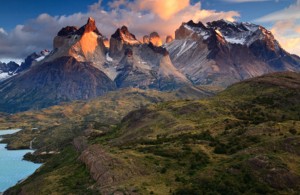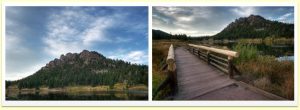Being in Colorado we have an abundance of amazing landscape to enjoy. Let’s not take those beautiful sunsets and sunrises for granted and capture a photo of them. Below are a few tips about landscape photography to help you capture nature’s magnificence next time you are out shooting.
Time of Day
The time of day can make all the difference between a good and a fantastic landscape shot. Generally, sunrise and sunset times are both ideal, though you will get very different results. For example, the sun may be behind you in the morning, shining onto your subject, but it might be in front or off to the side later in the day. Amazing light moments can happen at any time throughout the day though. Watch the clouds to see when light is about to break through. Clouds are also a good element to include in your photo.
Equipment and Settings
A wide angle lens is one of the best pieces of equipment for taking a professional looking landscape shot. If you are an amateur and sticking with your point and shoot camera then slow down the shutter speed and close down the aperture. A tripod, if available, is helpful to keep your shot steady.
Composition
A well-composed landscape shot can have a breathtaking effect. If your subject is off in the distance, do not place it in the middle of the shot, and look for an object in the foreground for juxtaposition, such as a rock, a tree, water, and so on. This creates depth, especially if the foreground object relates in some way to the background. Also, while it is perfectly fine to put a person or animal in the photo, that person or animal automatically becomes the subject, because the human mind connects first to things that we can relate to most. But, you can use a person to help guide your audience. For example, if a person is in the photo, instruct them to look away towards the background element as opposed to looking at the camera and smiling. The photo feels much more natural, and the person’s pose effortlessly guides the eye to the element in the background that you are trying to capture. 
Lastly, try to use natural elements in the photo to frame the photo and create a “window” to look through. Natural frames keep eyes on the photo rather than guide the eyes away from the composition. A tree is often a great natural frame in a photo. Railroad tracks or fences work as well.
After the Shoot
Play with converting the photos to black and white, and adjust the contrast levels to sharpen the tones. A mediocre color shot can look exquisite after it has been converted to black and white with some contrast adjustments. Don’t forget to print your work as well! Small prints are nice, but blow up some of your favorite shots to large prints, like 24×36, 30×40 or even bigger. They look incredible as framed pieces for your home or office, and are great conversation starters!
